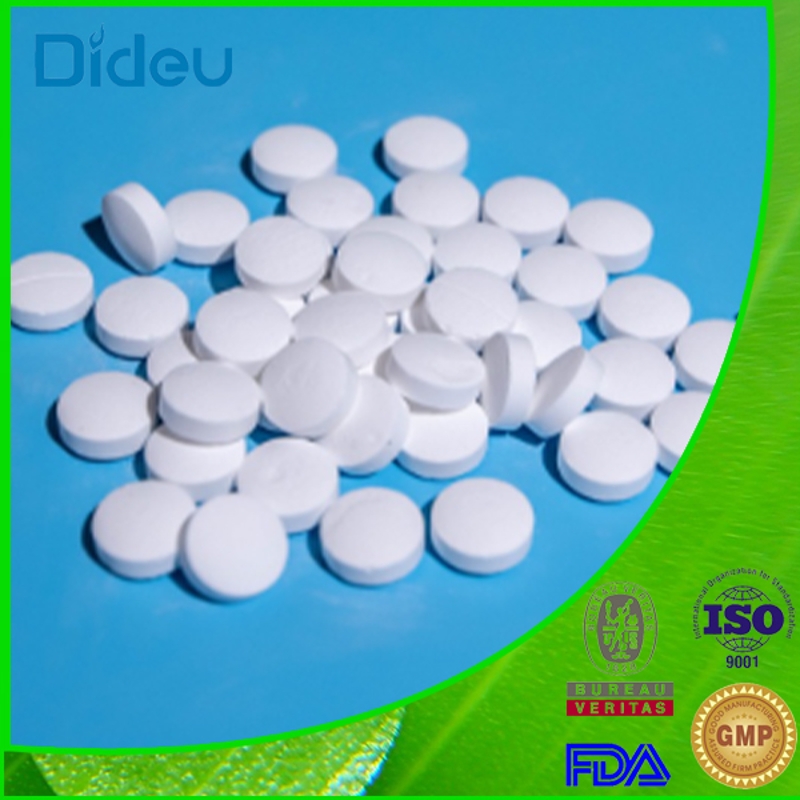-
Categories
-
Pharmaceutical Intermediates
-
Active Pharmaceutical Ingredients
-
Food Additives
- Industrial Coatings
- Agrochemicals
- Dyes and Pigments
- Surfactant
- Flavors and Fragrances
- Chemical Reagents
- Catalyst and Auxiliary
- Natural Products
- Inorganic Chemistry
-
Organic Chemistry
-
Biochemical Engineering
- Analytical Chemistry
- Cosmetic Ingredient
-
Pharmaceutical Intermediates
Promotion
ECHEMI Mall
Wholesale
Weekly Price
Exhibition
News
-
Trade Service
Guide
Sexually transmitted diseases (STDs, or sexually transmitted diseases for short) are a series of infectious diseases in which sexual contact is the main mode of transmission
.
According to the latest estimates of the World Health Organization, there are 376 million new STDs
worldwide each year.
Sexually transmitted diseases have the characteristics of strong concealment, long incubation period, recurrent attacks, long course of disease and difficult to cure, and most STDs do not have effective vaccines to protect susceptible people
at this stage.
A recent review published by The Journal of the American Medical Association (IF: 157.
335) details the clinical manifestations and treatment of sexually transmitted diseases (including gonorrhea, chlamydial infection, syphilis, Mycogenital infection, genital herpes
).
gonorrhea
Gonorrhea is a sexually transmitted disease caused by Neisseria gonorrhoeae that infects the oropharynx, rectum, eyes, and genitourinary tract
of a man or woman.
In both men and women, 53% to 100% of extragenital infections
are asymptomatic.
After an incubation period of 2 to 8 days of infection, men with gonococcal urethritis may present with urethral discharge and dysuria
.
Rare complications (incidence <1%) include penile lymphangitis, periurethral abscesses, and urethral strictures<b13>.
Symptomatic women may have vaginal discharge, vaginal itching, intermenstrual bleeding, or menorrhagia
.
Abdominal pain and dyspareunia suggest pelvic inflammatory disease
.
Babies born to infected mothers can develop gonococcal conjunctivitis
.
In adults, gonococcal conjunctivitis is usually caused by an infection of its own and there is an infection
secondary to non-sexually transmitted.
Gonococcal pharyngitis can cause sore throat, pharyngeal secretions or lymphadenitis of the neck; Gonococcal proctitis can cause anorectal pain, bleeding, swelling, or mucopurulent discharge
.
Disseminated gonococcal infection can cause a purulent joint (81%) or a triad of tenosynovitis, dermatitis, and polyarthritis (19%)
.
Treatment is recommended
Chlamydia infection
Chlamydia is a class of gram-negative obligate cell parasitic microorganisms with a unique biphasic development cycle that can cause a variety of related diseases in humans and animals, and can infect the oropharynx, rectum, eyes, and genitourinary tract
in both men and women.
Infants can develop lung infections
.
More than 70% of female genitourinary infections, more than 80% of male genitourinary infections, and more than 90% of patients with rectal and pharyngeal infections
are asymptomatic.
Clinical manifestations include urethritis (characterized by dysuria and urethral discharge), cervicitis (characterized by mucopurulent discharge), pelvic inflammatory disease, epididymitis (fever, testicular pain), or proctitis (rectal pain, secretions, and bleeding
).
Rare complications include Fitz-Hugh Curtis syndrome and reactive arthritis
.
Babies may be infected with chlamydia during vaginal delivery, causing conjunctivitis or pneumonia
.
Lymphogranuloma venerea venereal disease (LGV) is a sexually transmitted infection caused by the L1 to L3 serotypes of Chlamydia trachomatis, which occurs predominantly in men who have sex with men or in people who are transgender and who have been sexually transgender, and outbreaks
of rectal disease have been reported in the United States and other high-income countries.
LGV can be divided into 3 stages
.
In the first stage, a small and painless transient ulcer appears at the inoculation
site.
After 2 to 6 weeks to the second stage, the inguinal lymph nodes become enlarged and tender, and about 30% of the lymph nodes are spontaneously perforated
.
In patients exposed to the rectum, the second stage consists mainly of proctitis or proctitis, the histological manifestations of which may be indistinguishable from
inflammatory bowel disease.
LGV may also be asymptomatic
.
When the infection is untreated, the condition will progress to the third stage, and chronic lymphadenitis will leave scars, which may lead to lymphedema and genital erasis
.
Treatment is recommended
syphilis
Syphilis is caused by treponema pallidum and is mainly transmitted through sexual activity, mother-to-child transmission during pregnancy, and rarely through blood transfusions or organ transplants
.
Primary syphilis is the first stage of infection, usually with the appearance of a single painless ulcer at the site of inoculation and the appearance of regional lymphadenopathy
about 9 to 90 days after exposure.
Ulcers can be multiple, superficial, and painful
.
Secondary syphilis, which is dominated by bacterial diffusion, appears
4 to 10 weeks after the primary lesion.
A common feature of secondary syphilis is macules
.
In 48% to 70% of patients, a typical macules involving the palms and soles of the feet is present
.
Secondary syphilis can cause hair loss, abdominal pain, and joint swelling
.
Untreated, host immunocontrol bacterial replication to induce an incubation period, defined as infection
without signs or symptoms of syphilis.
Early latent refers to latent syphilis infection acquired within 12 months, and late latent is infection for more than
12 months.
Up to 25% of untreated patients with latent syphilis may usually develop symptoms
of secondary syphilis within the first year.
70% of untreated patients will remain latent for life, and the remaining patients will develop tertiary syphilis, including cardiovascular syphilis in 10% of patients who are infected untreated for 20 to 30 years, and 15% of patients who are infected for 1 to 46 years without treatment can develop syphilitic gumma
.
Neurosyphilis can occur at any stage of
infection.
Within about 6 weeks of infection, central nervous system diffusion occurs in 25% to 60% of patients, but only 5% develop symptoms
.
Early neurosyphilis usually presents as meningitis
.
Advanced neurosyphilis can lead to paralytic dementia or myema
.
Paralytic dementia occurs in 2% to 5% of patients who are not treated after 2 to 30 years, and 2% to 9% of patients who remain untreated after 3 to 50 years develop spinal cord tuberculosis
.
Syphilis of the eyes and ears can occur at any stage of
infection.
Treatment is recommended
Mycoplasma genitalium infection
Mycoplasma genitalium infects the genitourinary tract
in both men and women.
Between 30% and 40% of men with persistent and recurrent urethritis are infected with Mycoplasma genitalis, with symptoms including dysuria, penile irritation, and urethral discomfort
.
Mycoplasma genitalium has been linked to cervicitis, pelvic inflammatory disease, and infertility in
women.
Symptoms in women include cervicitis, postcoital bleeding, painful bleeding during menstruation, and lower abdominal pain
.
Mycoplasma genitalium can be detected in the pharynx, but its clinical significance is unclear
.
Treatment is recommended
Genital herpes
Genital herpes is a chronic, recurrent, lifelong viral infection
caused by herpes simplex virus (HSV).
HSV that causes genital herpes is divided into two types: HSV-1 and HSV-2
.
HSV-2 is primarily a pathogen of anogenital herpes, while HSV-1 can also cause lip disease
.
70% of infected people are asymptomatic, and after an incubation period of 4 to 7 days, symptomatic HSV-1 or HSV-2 infected people develop multiple painful erythema (95% to 99%), symmetrically distributed erythema (77% to 82%), and can progress to the papules, blisters, and ulcer stages
.
Lesions last an average of 16.
5 to 19.
7 days and may last for several weeks
.
Headache, fever, and lymphadenopathy
occur in 39% to 68% of patients with initial infection.
Meningitis can occur in severe infections (16% of HSV-1 patients, 26% of HSV-2 patients) and urinary retention
may occur.
Treatment is recommended
Trichomoniasis infection
Trichomoniasis infection caused by Trichomonia vaginalisis is a widely popular non-viral sexually transmitted infection worldwide, according to the statistics of the World Health Organization in 2019, there are 376 million new cases of sexually transmitted infections every year, of which about 150 million cases of vaginal trichomoniasis cases, ranking first, the incidence has exceeded gonorrhea, Chlamydia trachomatis and syphilis, and the combined rate of other sexually transmitted infections has reached 32.
5%.
About 85% of women and 77% of men are asymptomatic
after infection.
Trichomoniasis causes urethritis, epididymitis, or prostatitis in men and can present with symptoms
such as dysuria and urethral discharge.
Trichomoniasis can infect women's vagina, urethra, cervical lining, paraurethral glands, and vestibular glands, and common symptoms include dysuria, vaginal discharge, vaginal or vulvar irritation
.
In women infected with HIV, trichomoniasis infection is associated with
pelvic inflammatory disease.
In about 5% of infected women, erythema and "strawberry cervix" of the cervix can be observed, i.
e.
the cervix has a punctate erythematous appearance
.
Treatment is recommended
References:
1.
Zhang Yuwei,Dong Haoyu,Wu Minzhi,Shao Yan,Liu Xiao.
Exploration and Reflection on the Integrated Management Model of "Prevention and Control Tube" of Sexually Transmitted Diseases[J].
Jiangsu Health Service Management,2022,33(07):973-975.
2.
Tuddenham S, Hamill MM, Ghanem KG.
Diagnosis and Treatment of Sexually Transmitted Infections: A Review.
JAMA.
2022 Jan 11; 327(2):161-172.
3.
Xinying Leng, Huachun Zou, Leiwen Fu, Wujian Ke.
Interpretation of the 2021 CDC Genital Herpes Treatment Guidelines[J].
Chinese Journal of Dermatology and Venereology,2022,36(05):496-503.
4.
Zhu Bangyong,Liu Jingwei,Yin Yueping.
Progress of gentamicin in the treatment of gonorrhea and drug sensitivity monitoring[C]//.
Proceedings of the 2019 National Annual Conference on Leprosy Dermatology, 2019:542-545.
5.
Yu Maoying,Wu Qianmou.
Research Progress in Chlamydia Novellamy[J].
Advances in Microbiology and Immunology,2022,50(04):83-87.
6.
Zhuang Yayun,Liu Qiuli,Li Yuye.
Diagnosis and treatment of vaginal trichomoniasis[J].
Dermato-Scientific Bulletin,2021,38(01):70-73.







